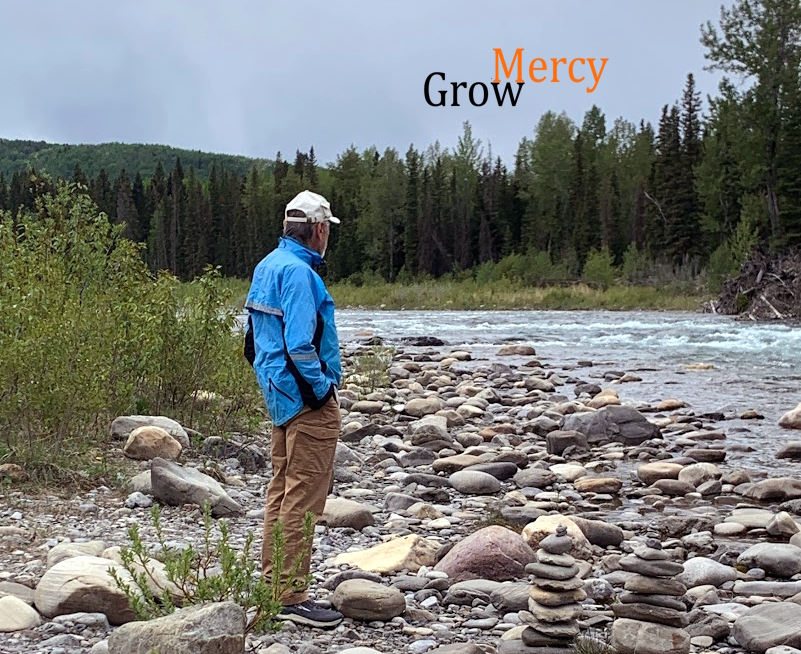See this picture? It’s hardly a shinning technical moment for photography, and yet, of all the old photographs I come back to, this is the one I seek out first.
We don’t know what kind of camera the photographer used. A popular, and inexpensive model of the 1940’s and early 50’s was the Kodak Brownie 127. But even a knocked-about Brownie wouldn’t wash out the edges and the horizon to this extent. A watercolour without the colour.
Neither do we don’t know who the photographer was. (Fancifully, we could mistaken this for a Miroslav Tichý photo—the only photographer never to concern himself about his kit. Fact is, he never graduated beyond a basic Russian-made pre-war affair with cobbled together lenses. But then, that could be his genius. Tichý however, would be “perving in parks,” not lurking in graveyards.) It could be a friend of the family; still, funeral directors were known to take pictures for clients as well; but no, it’s probably a family member.
To get the shot the photographer has taken the time, in this March blizzard, to climb up on a car, or a truck, or perhaps on the tailgate of the hearse. On second thought standing on the hearse may have shown impropriety. Of course I’m only assuming there was a hearse. These were frugal days.
The heart of the photograph shows a grieving widow. We don’t see her face, in fact, we cannot say for certain that she is there. All we have is a post-Victorian wool hat and fur-trimmed coat: a garment gutted by grief.
To the right of the widow is a daughter, sullen, resolute, holding the coat collar with a strong and slender gloved hand. To the left, a son, whose attention is entirely upon his mother. He seems to be propping up what is left of her.
In this tight clutch we see few faces, most are hidden. What we do see is a collection of hats: felt, wool, flat caps, bretons, fedoras, and my father, on the edge of the cluster, wearing what looks to be a Gatsby. One man on the opposite side of the group is taking on the situation without a hat. The woman beside him with white-furred coat and Merrimac hat, fashionably advanced. But she too clasps her collar close.
The faces we do see are visages-in-brief—half profiles, shaded eyes, shrouded brows—with the exception of a diminutive aunt and a small girl. The aunt’s face reflects the occasion. The child’s face too, is serious, but even in this grey nautical light, it reveals the bright curiosity of the innocent.
The foreground is filled with the backs of pall bearers, bent to the task. These are friends and relatives of the man in the unseen coffin, being lowered into the still frozen earth. These are men, who, beneath their wool duffels, carry the bulked-up burden of prairie farm labour on their frames.
We follow our eyes to the edge, a man at in a tall hat, not apart, or a part, but necessary to the procedure, looks on. And the photograph shifts.
On the horizon are grain elevators. But you would not be faulted to have thought these grave markers. And what of the solitary figure walking away? She seems as sheer as the hints of nearby trees, and the distant line of poplar. Is she walking back to town, searching for a grave stone? She seems to be carrying something. But the road appears impassable.
The funeral is of Samuel Breitkreuz, my grandfather; a man my eldest brother was named after; a man I never met. The village over the hill is Springside, Saskatchewan. The village I grew up in.
Springside is as typical and atypical as every other village on the prairies. And this funeral, as typical and atypical as any other funeral. Grief and resolve, sorrow and daily chores, the common lot—experienced uniquely—within the same bleak day, the same frozen earth, the same prairie winter stretched out by a death.
Unlike a painting, where space and time can be transcended, a photograph is a moment: cropped. A great photograph however moves a narrative beyond its frame. And this is a great photograph. Everything in it is necessary. Nothing can be removed without changing its spirit. However long you sit with it, penetrate its secrets, there are still more.


The one hatless man (left-center) looks like Jake Berg, a son-in-law of Samuel and my own grandfather. “On the horizon are grain elevators. But you would not be faulted to have thought these grave markers.” Indeed.
I first thought the hatless man was our Dad. I don’t remember the photo.
Beautiful
Thanks Ian and Joanne. (The hatless man is, I believe, Bert Brietkruez.)
I’m too young to remember Bert with a full head of hair!